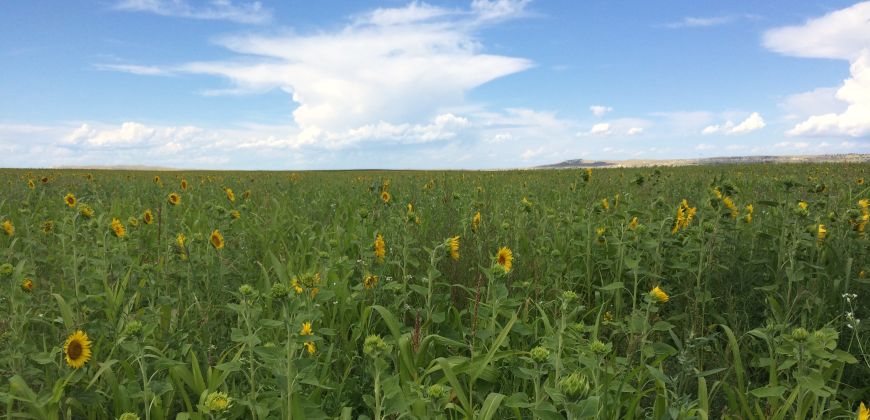
Growing conditions in the Great Plains of the western United States can be challenging, due in part to limited water resources. Now, a group of CSU researchers led by Meagan Schipanski, assistant professor of soil and crop sciences, has received a $1 million grant from the Natural Resources Conservation Service to examine how crop rotations and management can help improve soils through the retention of both carbon and water.

Addressing the needs of farmers and producers
“This study came about when farmers and producers came to us,” said Schipanski. “The national buzz about cover crops and crop rotations hasn’t really included a discussion of how those techniques can be used in our climate, where we have less water available.”
This project will look at the economic and soil quality trade-offs of different practices. Traditional farming practices plant fields with a single crop such as corn or wheat to reduce farmers’ short-term risk related to crop losses and low yields. By rotating crops or integrating mixtures of grazed forage crops, farmers might reduce their long-term risk by improving the quality of their soil to the benefit all of the crops they plant. The challenge is in reducing short-term risk while managing the soil for longer-term benefits.
A broad collaboration
Diversifying crop rotations and the use of cover crops has maintained yields while reducing environmental impacts for farmers in other parts of the United States, and Schipanski and her team want to see what rotation strategies can be best utilized here in Colorado as well as in Kansas and western Nebraska. Schipanski is collaborating with a number of other researchers in CSU Extension, her own Department of Soil and Crop Sciences, and the Department of Agricultural and Resource Economics.
“This project is a great example of the type of collaboration we need among CSU researchers, Extension, and producers to identify and evaluate the potential of new technologies and management approaches for our region,” said Mark Brick, acting head of CSU’s Department of Soil and Crop Sciences.
As the winter months approach, Schipanski plans to attend winter-grower meetings and to recruit additional farmers to participate in her study. Right now, there are six farmers willing to take part in the research and Schipanski would like to get that number to 10.
“On-farm research is an essential component of this study,” Schipanski said. “We would like to utilize a wide spectrum of farmers from across the region to help validate our recommendations for new crop rotation practices.”
For more information on this study and other projects funded by NRCS, visit the website.